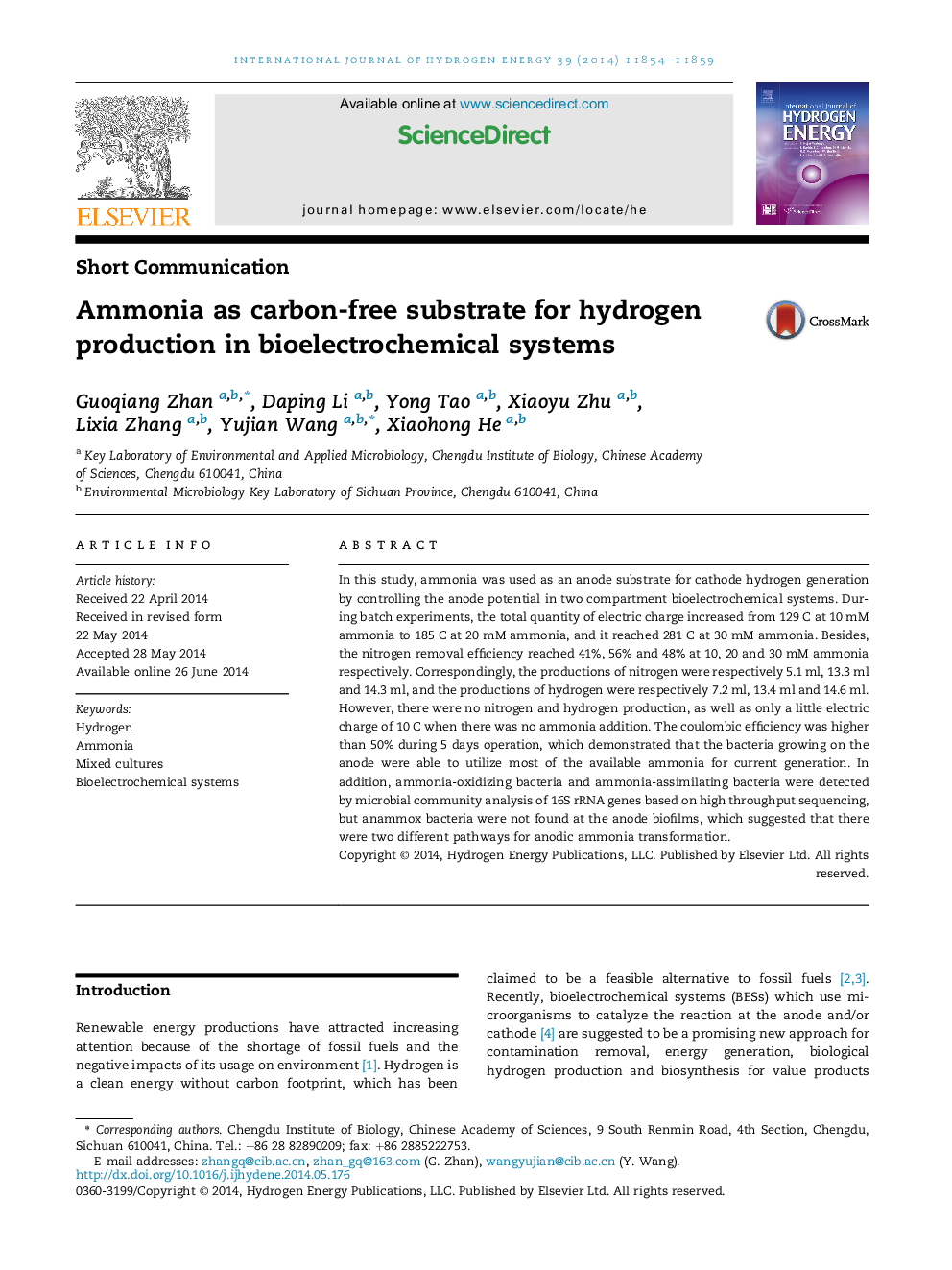| Article ID | Journal | Published Year | Pages | File Type |
|---|---|---|---|---|
| 1272983 | International Journal of Hydrogen Energy | 2014 | 6 Pages |
•Ammonia as hydrogen carrier for hydrogen generation is achieved in dual-chamber BES.•The coulombic efficiency (CE) is higher than 50% during 5 days operation.•80% of ammonia-N can be transferred into N2 during the process of ammonia oxidation.•Both ammonia-oxidizing bacteria and ammonia-assimilating microbes are detected.•Anammox bacteria are not found at the anode biofilms.
In this study, ammonia was used as an anode substrate for cathode hydrogen generation by controlling the anode potential in two compartment bioelectrochemical systems. During batch experiments, the total quantity of electric charge increased from 129 C at 10 mM ammonia to 185 C at 20 mM ammonia, and it reached 281 C at 30 mM ammonia. Besides, the nitrogen removal efficiency reached 41%, 56% and 48% at 10, 20 and 30 mM ammonia respectively. Correspondingly, the productions of nitrogen were respectively 5.1 ml, 13.3 ml and 14.3 ml, and the productions of hydrogen were respectively 7.2 ml, 13.4 ml and 14.6 ml. However, there were no nitrogen and hydrogen production, as well as only a little electric charge of 10 C when there was no ammonia addition. The coulombic efficiency was higher than 50% during 5 days operation, which demonstrated that the bacteria growing on the anode were able to utilize most of the available ammonia for current generation. In addition, ammonia-oxidizing bacteria and ammonia-assimilating bacteria were detected by microbial community analysis of 16S rRNA genes based on high throughput sequencing, but anammox bacteria were not found at the anode biofilms, which suggested that there were two different pathways for anodic ammonia transformation.
